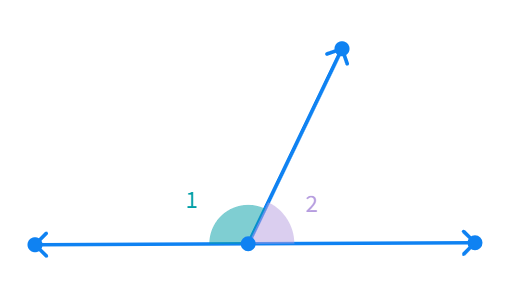Exercise 5.1
(i)
1. Find the complement of each of the following angles:
Angle1
Solution:
The sum of complementary angles is always
If the given angle is x, then we can find complementary angle by
(i) Angle = 20°
Complement angle of 20° = 90° − given angle
90° − 20° =
(ii)
(ii)Angle = 63°
Angle2
Solution:
Complement angle of 63° = 90° − given angle
90° −
(iii)
(iii) Angle = 57°
Angle3
Solution:
Complement angle of 57° = 90° − given angle
90° −
(i)
2. Find the supplement of each of the following angles:
Angle1
Solution:
In a pair of angles, if the sum of the values of the angles is always equal to that of
If the given angle is x, then we can find the supplement by
(i) Angle = 105°
Supplement angle of 105° = 180° − Given angle
180° −
(ii)
(ii) Angle = 87°
Angle2
Solution:
Supplement angle of 87°= 180° − Given angle
180° −
(iii)
(iii) Angle = 154°
Angle3
Solution:
Supplement angle of 154° = 180° − Given angle
180° −
3. Identify which of the following pairs of angles are complementary and which are supplementary.
(i)-(iii)
To solve the questions, we use the basic definition of complementary and supplementary angles.
We have to solve for supplementary angle or complementary angle:
(i) 65°, 115°
Sum of measure of these two angles = 65° + 115° =
Therefore, these two angles are supplementary.
(ii) 63°, 27°
Sum of measure of these two angles = 63° + 27° =
Therefore, these two angles are complementary.
(iii) 112°, 68°
Sum of measure of these two angles = 112° + 68° =
Therefore, these two angles are supplementary.
(iv)-(vi)
(iv) 130°, 50°
Sum of measure of these two angles = 130° + 50° =
Therefore, these two angles are supplementary.
(v) 45°, 45°
Sum of measure of these two angles = 45° + 45° =
Therefore, these two angles are complementary.
(vi) 80°, 10°
Sum of measure of these two angles = 80° + 10° =
Therefore, these two angles are complementary.
6. In the given figure, ∠1 and ∠2 are supplementary angles. If ∠1 is decreased, what changes should take place in ∠2 so that both the angles still remain supplementary.

- We have ∠1 and ∠2 are supplementary angles.
- When ∠1 is decreased, ∠1 and ∠2 should remain supplementary angles. For this,
- Say angle ∠1 decreases by "x" amount (∠ (1 - x))
- Then angle ∠2 needs to increase by "x" amount (∠ (2 + x)) to balance out and maintain the angle sum
- Therefore, ∠2 must increase by same amount.
7. Can two angles be supplementary if both of them are (i) acute ? (ii) obtuse ? (iii) right ?
9. Fill in the blanks:
(i) If two angles are complementary, then the sum of their measures is
(ii) If two angles are supplementary, then the sum of their measures is
(iii) If two adjacent angles are supplementary, they form a
- 10. In the adjoining figure, name the following pairs of angles.

Try to move the angles into the correct classification.
